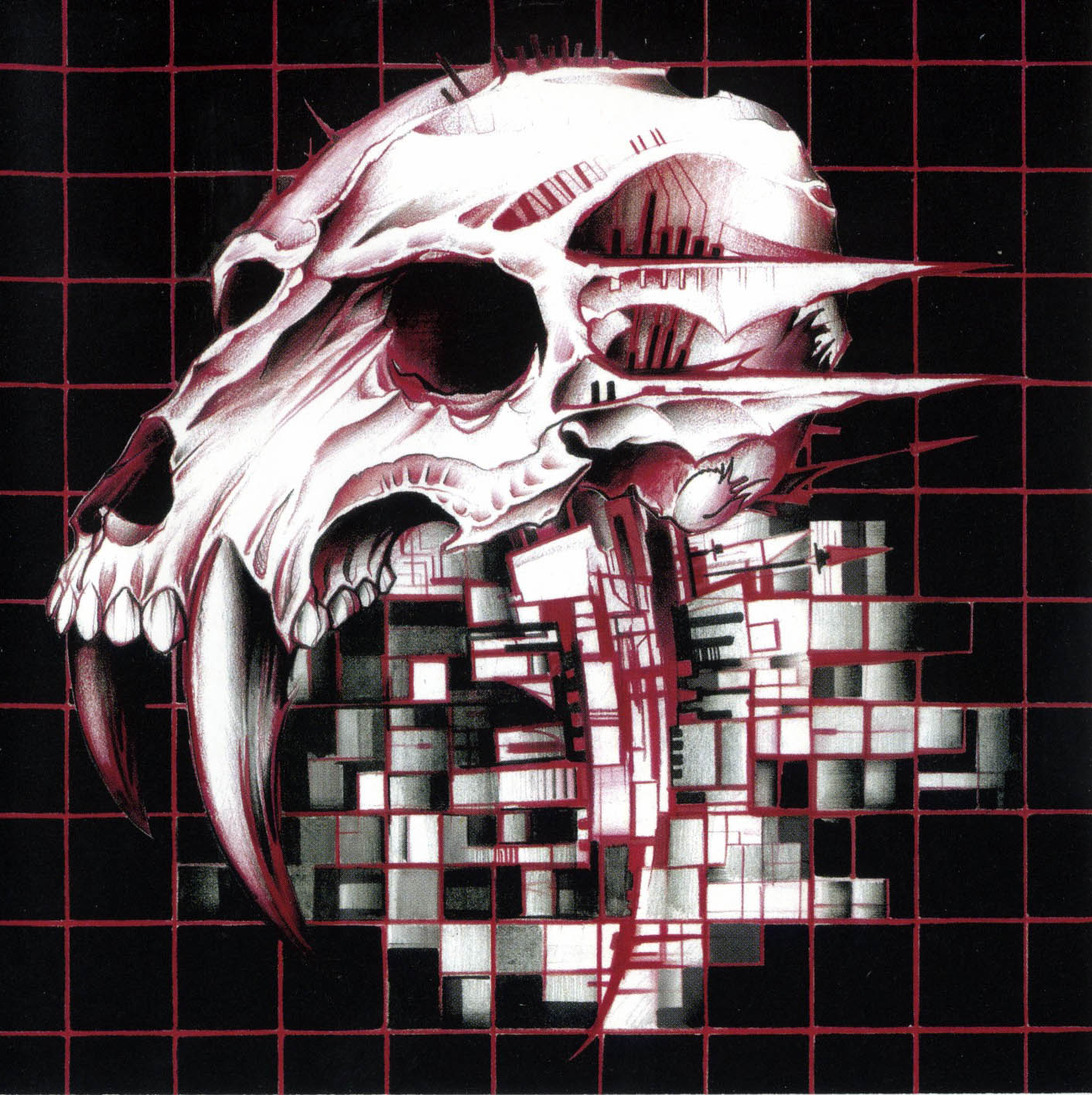The device I designed at work can be formatted and reinstalled without interrupting its work.
I once redid the whole bootloader remotely.
I had a remote server that wasn’t luks encrypted because I didn’t do that some 3 years ago when setting it up.
So naturally I did the sane thing and kexec a live environment with ssh and a wireguard client, did an in-place encryption of the software raid disks, set up remote unlocking with VPN and rebooted.
And I still can’t believe that it actually reconnected after that.
Me learning Linux:
I have no idea what the difference between systemd-boot and grub.
Also, I’m not going to check which one is being used, I’ll just remove the one I don’t like
Linux:
Get after it chief
Why did I have both installed? No idea. Did I have to make and use a recovery USB? Absolutely.
In Linux, you are in charge. If you say jump, Linux asks “how high.” If you ask Linux to bomb a daycare it’ll say “run with sudo or root.” If you ask Linux to sudo bomb a daycare it’ll say “should I leave no witnesses?”
Linux user seeing a 50% chance to uninstall their bootloader:
Let’s go gambling!
It’s bloat if you don’t stop running
Your system will break
So it is actually my system not Microsoft’s?
According to the windows logo face guy, I suppose
Bootloader’s gone boss. Now what?
Don’t reboot 🙏
Reboot from live image if you really need to.
every linux installation that was ever made was really about trying to break the uptime world record
I so wish this were representative. I have been trying to install nvidia drivers on debian and doing so bricked my entire workstation lol. If you know anything about this don’t hesitate to chime in btw
Mint has a driver manager application that makes installing nvidia drivers point-and-click simple.
Come to think of it, the three PCs I use on a regular basis all have nvidia GPUs (970, 1080, discrete quadro in a dell laptop) and all are running Mint. No problems, even playing games.
I even use that one script to unlock the number of simultaneous NVENC sessions after I update the driver.
No clue how to fix it. I had a similar issue and it fixed itself when I switched to endeavouros with i3.
Ok, thank you for the feedback still. You were able to install a different OS and boot into it normally?
Yes, it was only after grub that the drivers were loaded and the kernel presumably panicked or at least nothing was displayed. Not sure if that is what you mean by bricked the entire workstation. If something broke before the kernel is loaded I doubt it was because of the drivers. If you want to keep your current Debian installation alive you can try tochrootinto it from a live usb. Sorry if this is completely obvious to you but I really don’t know what to expect based on your description.Having looked at your other comments and the post you linked I too am intimidated. It looks as though you have access to your boot menu and bios though. I don’t know what the upsides of secure boot are but I never turned it on on my current desktop PC. Maybe disabling it could help?
Good news is it’s much harder to accidentally wipe/fragment all your files than it is to break your system
If anything is lost right now, you might be able to get it back just by booting from a live USB to explore your file system
Sounds representative, it didn’t even try to stop you!
Everyone else is saying secure boot should be correct. I was unable to load my nvidia driver until disabling secure boot, but I luckily had integrated graphics. What I think happened is you switched to to nvidia drivers that required proper secure boot before it would load. The drivers that are loaded before that don’t require secure boot to be setup so that’s why you had an output.
This is just an nvidia thing unfortunately.
You should know nvidia is the worst and it is definitely an nvidia problem. Nothing else (even DNS) is, such a pain on linux. Nvidia routinely ships broken software on their stable branch even for their top of the line consumer cards.
I have two 4k monitors and run many flavors of Linux as daily drivers. Plus I have a 4090. It’s not a super common setup but for a company as huge as nvidia they should be testing dual monitor setups and it is clear they do not. I have stopped updating my nvidia drivers after the 3rd time I lost basic functionality after a driver update.
Like the hardware or just the install?
A live usb would let you in to fix it
SSH in and forcibly uninstall all Nvidia packages, then reinstall them fresh following Nvidia’s website.
At least this has worked for me on Ubuntu on several occasions.
I ran
dpkg --get-selectionsto get all my installed packages and here’s the installed Nvidia stuff. Try to install what’s missing.If you can’t even get to command line, try to backup your data to an external source by using a live USB, and replace your debian with Pika OS, which has all the Nvidia stuff out the gate.
nvidia-alternative nvidia-driver nvidia-driver-bin nvidia-driver-libs:amd64 nvidia-driver-libs:i386 nvidia-egl-common nvidia-egl-icd:amd64 nvidia-egl-icd:i386 nvidia-installer-cleanup nvidia-kernel-common nvidia-kernel-dkms nvidia-kernel-support nvidia-legacy-check nvidia-modprobe nvidia-persistenced nvidia-settings nvidia-smi nvidia-support nvidia-suspend-common nvidia-vdpau-driver:amd64 nvidia-vulkan-common nvidia-vulkan-icd:amd64 nvidia-vulkan-icd:i386EDIT : from
apt list --installedlibnvidia-allocator1/stable,now 550.163.01-2 amd64 [installed,automatic] libnvidia-allocator1/stable,now 550.163.01-2 i386 [installed,automatic] libnvidia-cfg1/stable,now 550.163.01-2 amd64 [installed,automatic] libnvidia-egl-gbm1/stable,now 1.1.2.1-1 amd64 [installed,automatic] libnvidia-egl-gbm1/stable,now 1.1.2.1-1 i386 [installed,automatic] libnvidia-egl-wayland1/stable,stable,now 1:1.1.18-1 amd64 [installed,automatic] libnvidia-egl-wayland1/stable,stable,now 1:1.1.18-1 i386 [installed,automatic] libnvidia-eglcore/stable,now 550.163.01-2 amd64 [installed,automatic] libnvidia-eglcore/stable,now 550.163.01-2 i386 [installed,automatic] libnvidia-encode1/stable,now 550.163.01-2 amd64 [installed,automatic] libnvidia-encode1/stable,now 550.163.01-2 i386 [installed,automatic] libnvidia-glcore/stable,now 550.163.01-2 amd64 [installed,automatic] libnvidia-glcore/stable,now 550.163.01-2 i386 [installed,automatic] libnvidia-glvkspirv/stable,now 550.163.01-2 amd64 [installed,automatic] libnvidia-glvkspirv/stable,now 550.163.01-2 i386 [installed,automatic] libnvidia-gpucomp/stable,now 550.163.01-2 amd64 [installed,automatic] libnvidia-gpucomp/stable,now 550.163.01-2 i386 [installed,automatic] libnvidia-ml1/stable,now 550.163.01-2 amd64 [installed,automatic] libnvidia-pkcs11-openssl3/stable,now 550.163.01-2 amd64 [installed,automatic] libnvidia-ptxjitcompiler1/stable,now 550.163.01-2 amd64 [installed,automatic] libnvidia-ptxjitcompiler1/stable,now 550.163.01-2 i386 [installed,automatic] libnvidia-rtcore/stable,now 550.163.01-2 amd64 [installed,automatic]Thanks a bunch for the advice but I can’t start my system. That’s regardless of the distro I try and install (I already overwrote Trixie with Bazzite… and now with Nobara). I followed this tutorial :https://fostips.com/install-nvidia-driver-in-debian-13/?amp=1
I explain the situation over here in more detail if by any chance this rings a bell with you :
https://forums.debian.net/viewtopic.php?t=164124
Cheers, appreciate the advice
you done fucked up the secure boot settings I think. I am in no way qualified to help you.
I don’t even understand how you can install a different OS. Work off a live USB if you even can.
As far as I understand this is the bit you fucked up. btw, the images in the debian forum post just show “filename1.jpg” as text and don’t display. post on !/c/[email protected]
Step 2: Enroll MOK key for Secure Boot Debian updates its kernel (minor versions) regularly for security updates and fixes. Without re-building kernel modules every time, DKMS is used, which however needs be signed for secure boot using a machine owner key (MOK). 1. First, run the command below to check if Debian was installed with UEFI boot by running the command below in terminal: ls /sys/firmware/efi The command tells to list the /sys/firmware/efi directory content. If it says “No such file or directory”, then you have Debian installed as legacy boot. 2. Next, run command to check if secure boot enabled: sudo mokutil --sb-state If both UEFI and secure boot enabled (as the screenshot below shows you), then you need to run commands below one by one to create and enroll MOK key. 3. First, run the command below to manually generate a mok key. sudo dkms generate_mok Run sudo apt install dkms if the dkms command not found, and set a password for the key. 4. Next, run command to import the key: sudo mokutil --import /var/lib/dkms/mok.pub 5. Finally, reboot your computer. At next boot, it should pop-up a screen (see the screenshot below), asking to perform MOK menagement. There, just choose to Enroll MOK -> continue -> confirm -> enter password (you set when creating the key) -> reboot. After enabled non-free repository and enrolled MOK key, you may then run the commands below to install NVIDIA driver. First, install the kernel headers for DKMS: sudo apt install linux-headers-$(dpkg --print-architecture)Thank you that’s already a lead !
I did follow the instructions to the letter so not sure what I should have done differently
I am going to ask on the community you linked. Thanks again
I just cross-posted my cry for help over there. Thanks again for the redirection. https://programming.dev/post/39832602
Can’t see the images in the forum, but is the kernel actually starting? (Does it get past grub? Does it get to grub?)
From your forum post it sounds like you’re seeing a secure boot issue, which may require changing some bios settings. (Installing the non free driver definitely breaks secure boot.)
Hi, how do I check for that ? how do I recognize grub ?
Here is a crosspost of my thread from the Debian forums :
https://programming.dev/post/39832602Thanks a bunch for stopping by…
Yep, definitely secure boot. For now, you may be able to disable secure boot on your workstation or boot off of the install media and run the commands to enroll the mok key that you were given in another thread.
also windows: “Can i use X app” “sure here’s a .exe”
also Linux: “can i use X app?” “here’s an open source alternate that doesn’t work as well as the windows version, but you don’t care about that, you just wanna be cool!”
also Linux: “can i use X app?”
Drink this wine or grab this atoms core (proton)
1993 called and wants the inferior FOSS software you last tried back. Haha.
I find that Linux apps for basic stuff are now well ahead of their Windows counterparts.
It’s getting hard to find quality free software that is Windows native, and not just a recompile of a Mac or Linux tool.
I’m happy to pay for software too, but the paid stuff has all been shit, for awhile, in my weird experiences. (Weird, in that I’m not doing music or video editing or non-developer power user stuff. I’ve heard mileage may vary with those.)
dude, linux is not a desktop for non-programmers.
It’s for people who aren’t tech literate. The people who don’t know/shouldn’t be using cli commands or editing the registry.
It literally is. Please get out from under your rock.
no its not and stop trying to push it like it is.
I’m not a programmer, I’m a guitarist, and yet I still manage to use Arch (btw)! Linux isn’t just for programmers, it’s for people who don’t hate learning things, but do hate someone else controlling their machines.
ok.
If I may ask, what software are you referring to? The only software I could think of off the top of my head that doesn’t have suitable replacements for Linux is creative production software like the Adobe suite and DAWs, professional CAD software like AutoDesk, and, like, AutoHotKey.










